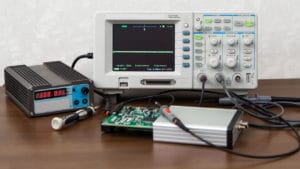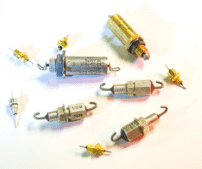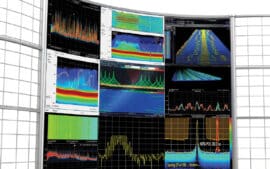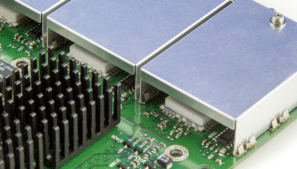Learn the benefits of using a pre-certified radio frequency (RF) module in the design phase when building a new IoT application, and learn the implications in EMC and Radio certifications. The Internet of Things (IoT) is revolutionizing the quantity and manner in which we exchange and store information. Historically, people exchanged information through reading and … [Read more...]
Millimeter Wave Applications and Promise
Imagine a radio frequency wavelength about the thickness of your pinky nail. This is a new area for technology applications. A growing area in spectrum development is exploding. For many decades, very high frequencies (millimeter waves) have been the playground of radio-astronomers to image our solar system, stars, and galaxies. This space is “new” fertile ground for sensing … [Read more...]
Design for Compliance Essentials
INTRODUCTION While unrealistic to discuss all aspects of product design in a single article, I’ll try to describe the most common design issues I find in the hundreds of client products I’ve had a chance to work on. These issues generally include PC board design, cables, shielding, and filtering. More detailed information may be found in the Reference section below. As … [Read more...]
SI Metrics That Have Taken Us to 224G
In the world of signal integrity, we rely on many important metrics to qualify high-speed channel designs, both before prototyping and during prototype testing. There is a common group of signal integrity metrics that appear in high-speed digital interface standards and which need to be implemented in printed circuit boards and packages. These signal integrity metrics … [Read more...]
Filter Installation Issues Pt. 3: Mounting and More
This article is the 3rd and final part of a three-part Filter Installation Issues series. Read Part 1: Input and Output Conductors here. Read Part 2: The Synergy of Filtering and Shielding here. There are now many suppliers of PCB-mounted shielding-cans that can be used with three-terminal filters, and they have many types that can be automatically assembled like any … [Read more...]
Reliable and Dependable Biconical Antennas 20 MHz to 18 GHz
For many years, most standards called for the use of a half-wave dipole antenna set for frequencies above 80 MHz. However, to reduce test time, broadband antennas such as the biconical antenna and log periodic antennas began to be accepted. Broadband antennas, compared to half wave dipoles, reduce test time because the technician did not have to stop the test to adjust the … [Read more...]
CubeSats: Flying Above and Within the Fray
All satellites are vulnerable to a wide variety of EMC and environmental effects, from launch to deployment. Of particular concern is the effects of Coronal Mass Ejection (CME) events. These are caused by sun activities that result in waves of cosmic rays and particles and electromagnetic energy. Significant CME events occur in sync with the “11 Year Sunspot Cycle” which, … [Read more...]
Guide to Real-Time Spectrum Analyzers: Types
Introduction The spectrum analyzer is the one “go-to” tool for every RF, microwave, and EMC/EMI engineer. In recent years, a new acquisition technology has developed, based on FFT capture and digital signal processing – the real-time (RT) spectrum analyzer. This series of articles will review the basics of conventional swept versus real-time spectrum analyzers and highlight … [Read more...]
Exodus Model AMP4025P-5KW Pulse SSPA, 3.1 – 3.5GHz, 5KW
Exodus Advanced Communications' AMP4025P-5KW operates from 3.1-3.5GHz, delivering 5KW minimum pulse power with excellent RF pulse fidelity. It features a class AB design with -20dBc harmonics and -60dBc spurious. The system includes extensive control and monitoring via a large touchscreen or remote interface, housed in a 17-inch, 8U chassis. Learn more and download the data … [Read more...]
How to Specify Board-Level Shielding
The Purpose of Board Level Shields Board level shields (BLS) are generally small metallic shielded boxes mounted directly to PC board ground return layers. There are three primary purposes of board level shields: Isolation of sensitive circuitry from other noisy circuits on the board Trapping the emissions from noisy circuits on a board from propagating to the outside … [Read more...]
- « Previous Page
- 1
- 2
- 3
- 4
- 5
- …
- 365
- Next Page »












